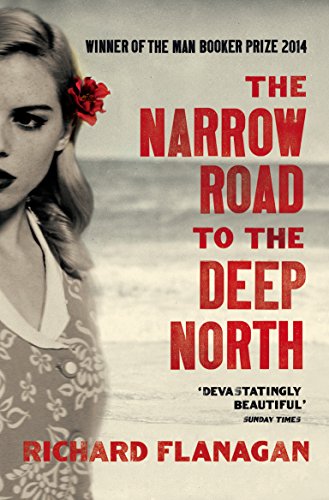Why a Booktrail?
WW2: Winner of the Man Booker Prize in 2014 and a gripping journey to the Japanese Death Railway and a love affair amidst the pains of war

WW2: Winner of the Man Booker Prize in 2014 and a gripping journey to the Japanese Death Railway and a love affair amidst the pains of war
Dorrigo Evans is a surgeon from Tasmania who joins the Army and spends time as a POW in a Japanese camp in World War 2. His days of back breaking work in helping to build the Thailand-Burma railway – aka the Death Railway – are long and laborious.
Haunted by his affair with his uncle’s young wife two years earlier, he also struggles to survive his current situation. He cannot serve and command his men as he needs to nor protect them from the starvation and illness which surrounds them all. But then one day he receives a letter which changes everything..
Parts of this book area true reflection of the events in the author’s life and history. His father served during the war and some stories can be haunting and challenging but based in fact gives this already epic read an unique insight into a unique time and place in history.
Jerky, with the action moving back and forth gives the novel a unstable feel which reflects the action of the war perfectly
We start in Tasmania where ‘..in the days when the world was wide and the island of Tasmania was still the world. Add on its many remote and forgotten outposts, few were more forgotten and remote than Cleveland where Dorrigo Evans lived”
This is the man who will grow to become a doctor and find himself working on the Death railway in Burma during wartime. This childhood is one filled with a desire to become a doctor, to become someone. His childhood forms his dreams and experiences which will shape him later. Through flashbacks he returns to the childhood and his past now being plastered over the media. This reluctant war hero needs to linger in the past just a while…
To have survived the Burma Railway, and to have inspired his fellow POWs as they battled for survival must have been an impossible situation but thorough the eyes of Domingo we see how time and place did not surpass the strength and resilience of the people who suffered it.
Captured by the Japanese, he takes up top a slave labour camp where a hammer and chisel are thrust into his hands and he’s told to get to work. This railway was the product of horror beyond belief. It was to be built to allow supplies to get from Siam to Burma. This is a brutal and unforgiving time but it’s the Japanese treatment of the people and the conditions they are faced with which are the most horrific of them all.
The human angle is just as graphic – here the Japanese officers are brutal beyond belief and many parts are graphic. Prisoners and guard glower at each other and weapons are drawn, bullies of every shade and workers who just want to survive. The Japanese however are not all portrayed as sadists – in war time, nothing is black and white – Major Nakamura for example you could argue is almost as a victim himself, with deadlines for completion of the railway being the stick with which he is beaten with by those on high. Still, human brutality is the reality here and guards such as Goanna the more horrific of the two.
What happens to someone who has lived through this? How do they survive? Can they ever move on and live with what they’ve seen? Doriggo wants to survive in his post war life but the transition for him and others is not going to be easy.